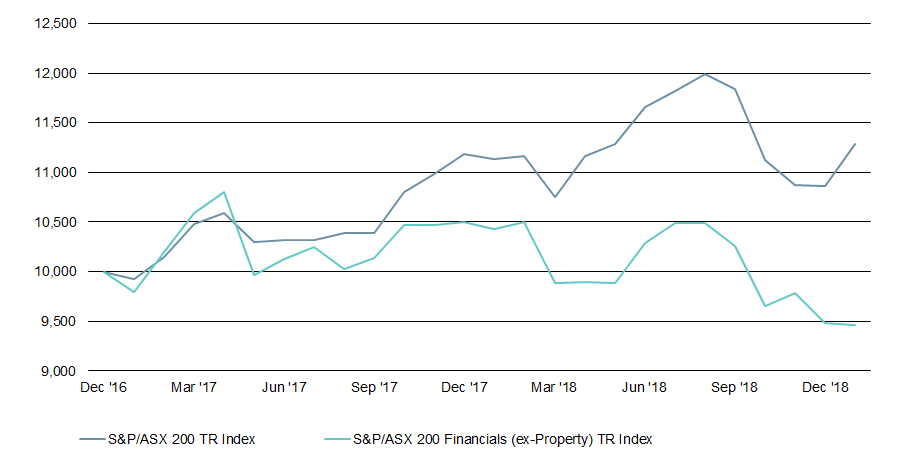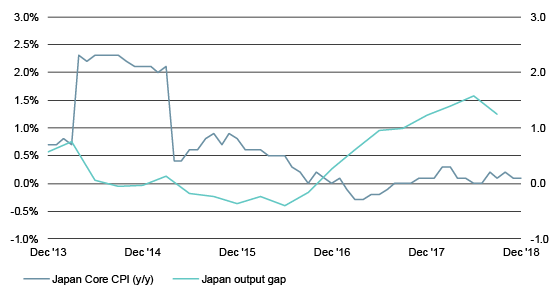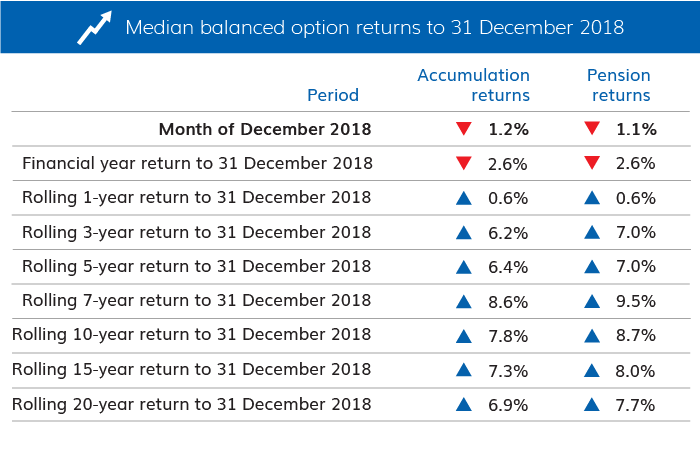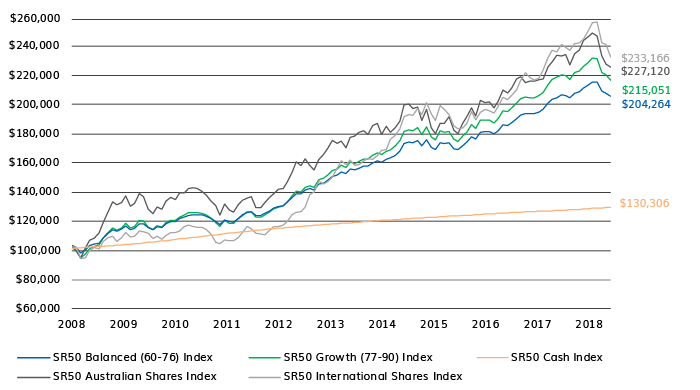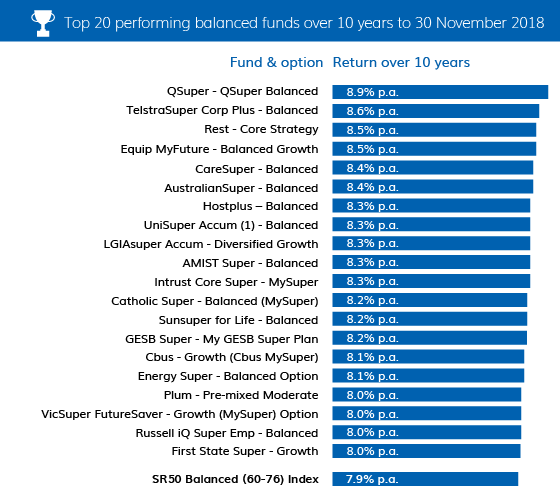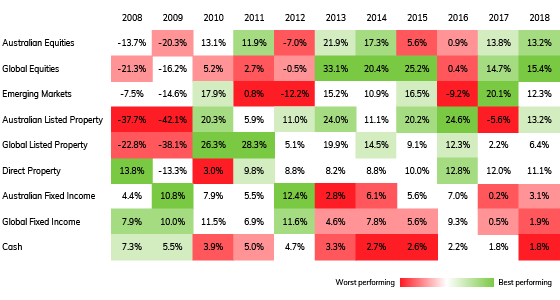Earlier this month, at his first public speech for 2019, RBA Governor Phil Lowe conceded the rate outlook is now “evenly balanced”, dropping the rate tightening bias present in RBA communications throughout 2018. In its latest forecasts contained in the Statement of Monetary Policy, the RBA has also revised lower its GDP and inflation forecasts.
So what has caused this change in outlook?
Weaker global outlook
Overall, global growth was strong in 2018 with falling unemployment and above-trend economic growth in the advanced economies. In Q4 2018, a few factors weighed on the growth outlook and the financial markets, including trade tensions between the US and its trading partners, slower growth in Europe and Asia, and political risks including Brexit and rising global populism. A greater-than-expected slowdown in China especially weighs on the outlook for Australia.
Stubbornly low inflation
With an improving domestic economy and tightening labour market, the RBA had been expecting inflation to move higher to its target band of 2–3%. That has not eventuated, and underlying inflation has been around 1.75% for some time. While there has been some pickup in wages growth, it remains subdued. In addition, rent inflation and the cost of new dwelling construction have remained soft given a weaker housing market.
Falling dwelling prices and a constrained household sector
Despite an improving labour market and falling unemployment rate, Australian households remain under considerable pressure, and household consumption growth has been weaker than expected. Factors weighing on household spending include subdued wages growth, rising cost of living (utility prices and mortgage interest rates), the high rate of part-time employment and underemployment, high household indebtedness, falling consumer sentiment in recent months, and also the declining wealth effects from falling house prices and weaker equities markets.
Tighter credit conditions
While domestic financial conditions remain accommodative overall, credit conditions for housing and small business have been tighter. Banks are facing higher funding costs as well as tightening lending standards as a result of the Royal Commission.
What’s ahead?
This change in rhetoric has seen financial markets pricing in a 60% chance of a rate cut by 2019, but in our opinion the RBA is likely to remain in wait-and-see mode. While it was forced to revise down its growth forecast, GDP is still expected to grow by 2.5% in 2018-19 and 2.75% in 2019-20, which is around the long-term trend level, while the unemployment rate is expected to stabilise around 5.0%. In addition to inflation, the RBA is likely to watch:
The business sector
As mining investment and exports return to more normal levels, non-mining business sector is expected to drive growth forward. However, business conditions and confidence have been trending lower, as measured in the NAB Business Survey. There are a few headwinds facing Australian businesses, including policy uncertainties associated with the federal election, slowing growth in China, tighter lending standards, falling building approvals and peaking mining exports. Retail conditions especially have been weak for quite some time—another reflection of a constrained household sector. The upcoming federal election is likely to contain business friendly policies to stimulate the economy and investment, while large infrastructure spending is also expected to drive investment growth in the medium term.
Household sector
The household sector remains constrained. As income growth has been weak, households have been saving less of their income to maintain consumption. Wages growth is therefore needed to maintain sustained consumption growth. The RBA will watch developments in the labour market closely. Leading indicators including the NAB survey employment index and SEEK job ads have pointed to a peak in employment growth. A marked slowdown in the labour market could see the RBA start cutting rates.
Dwelling investment
As the apartment building boom passes its peak, the fall in dwelling investment will be a drag on the economy and will likely see job losses in the construction sector and related industries. The RBA forecasts dwelling construction to decline by a cumulative 10% over the next two years. Given falling house prices, new approvals for houses and units are likely to be slow to come online. While infrastructure projects can absorb some construction employment, the overall drag on the economy would be significant over the near term.
Exports
The lower AUD will likely support export growth. While 2019 export growth will be driven by the completion of several large-scale LNG projects, once they reach full capacity their contribution to overall economic growth will be reduced. Rural exports this year are also expected to be lower due in large part to the severe drought.


